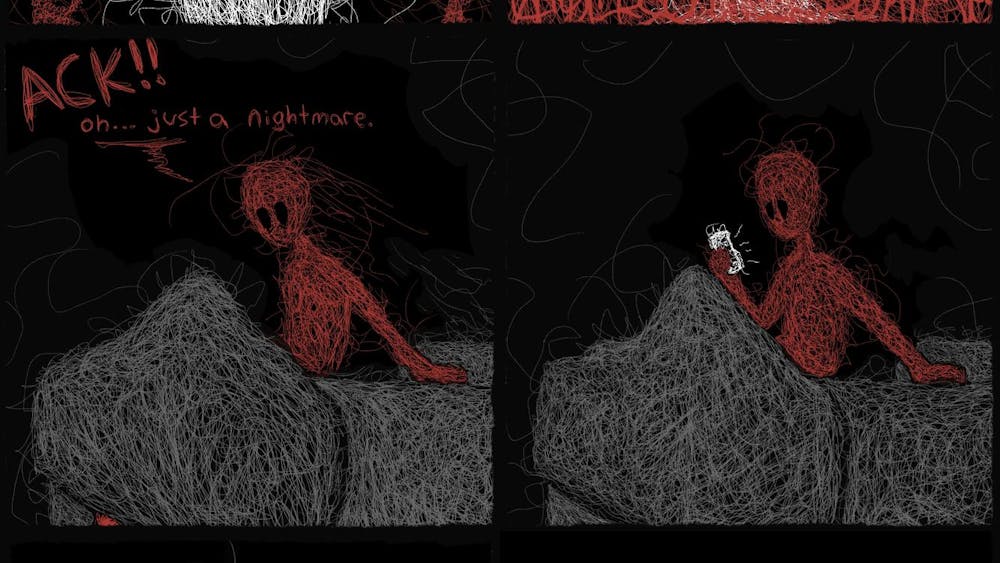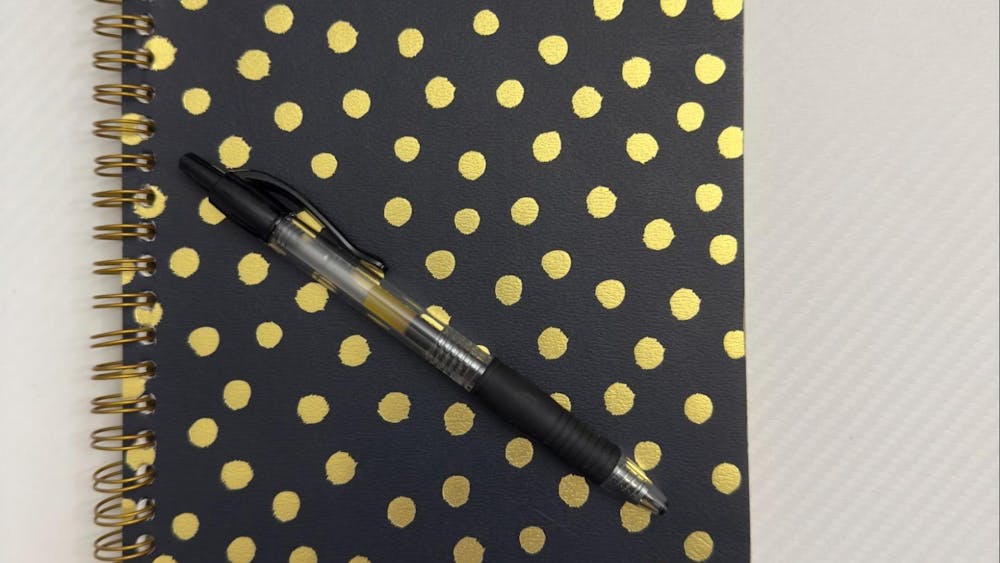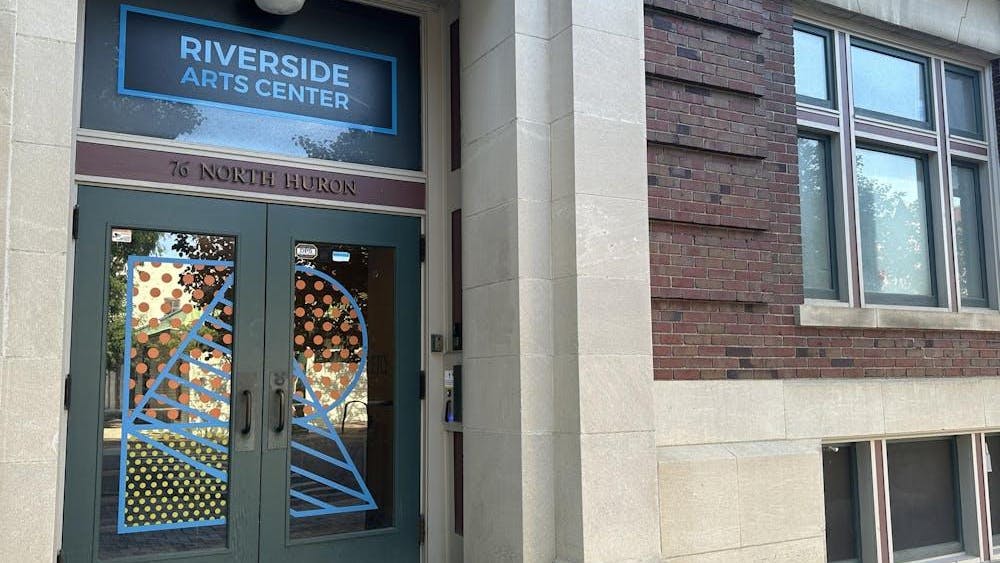A visitor, thinking he or she is simply going to look at art at the New Faculty Exhibition, will be confronted with a different kind of experience.
The exhibit will be hanging in the Ford Gallery located inside Eastern Michigan University’s Ford Hall until Nov. 10. It features four of the newest faculty members of EMU’s art department: Jason DeMarte, Jason Ferguson, Brian Spolans and Gregory Tom.
Tom, the gallery programs director, and Spolans, printmaking instructor, have been at Eastern since January 2010 whereas, DeMarte, a photography instructor, and Ferguson, a sculpture and foundations instructor, have only been teaching at Eastern, since September.
Tom’s piece “Showtime,” challenges viewers right at the entrance, as they have to decide how to climb through, around or on top of the massive wall sized two-by-fours screwed together.
“I wanted the piece to make the viewer feel disoriented and confront those that enter,” Tom said.
Brienne Willcock, 25, and a graduate student at EMU, said, “I think people’s curiosity about these structures will outweigh any disorientation or invasiveness that you get upon first impression.”
Eastern built mobile walls for the galleries just before Tom started as the gallery director. Installing them in the gallery allows exhibits to have more options instead of always displaying in the rectangular shape of Ford Gallery.
“The eight different raw two-by-fours skeletons map the locations of the various walls since I started my tenure,” Tom said. “It creates a network of obstructions and visual obstacles and allows the viewer to think about how we use walls to hang stuff.”
Tom wanted to exhibit a piece that would demonstrate the irony of him playing the role of the artist and the person in charge of the installation management of the show.
“I understand it now that Tom explained it to me,” said 23-year-old Alexandra Diety, a student at Eastern, as she stood and leaned right on to the skeleton wall. “It’s interesting to see how the different kind of people walk through it. It’s an interactive piece of art that makes you wonder what it’s all about.”
The idea behind Tom’s piece “Showtime,” altering the way an audience views the gallery space, is similar to the concept of Ferguson’s piece “Inanimate Dissection,” where he dissects a shoe based on the method used in a high school biology class for a frog or a fetal pig. This was displayed by playing a video of the actual dissection of the shoe in the gallery, as well as the remains of the shoe sitting next to it with surgical pins still in place.
“I wanted people to get a visual gut reaction to common objects,” Ferguson said. “I wanted them to feel disgusted next time they look at a shoe.”
He also has future plans to do anatomical surgery on a lazy boy.
Ferguson’s goal is to use scientific approaches to better understand philosophical questions. He uses scientific protocol, the methods of experimentation and observation in order to explore details of human experience more thoroughly.
Spolans hoped his prints would receive the same kind of frivoled reactions as Tom’s structures.
“I hope to create some curiosity and concepts of beauty on how things relate and interact,” Spolan said. “I utilize the narrative accessibility of these archetypes and combine them until their context feels changed.”
His prints categorize, reorganize and combine archetypes from cinema, video games, literature and other forms of communication. He combines them until their context feels changed.
Spolans’ prints are found on the wall next to DeMarte’s photography which digitally combines images of fabricated and artificial florals with graphic elements and commercially produced products such as processed food, domestic goods and pharmaceuticals. He uses these objects in absurd groupings to address the attitudes and understandings of the contemporary experience. It metaphorically shows the mental separation from what is “real.”
“The closer we come to mimicking the natural world, the further away we separate ourselves from it,” DeMarte said.
These four artists all demonstrate different concepts within the show, but all explore the concept of the audience’s current environment.
“Overall, the work was diverse and refreshing, different from other faculty members I’ve seen in the past,” Willcock said.
The viewer will be surprised to discover the skeleton walls are not a sign of an unfinished exhibit and at some point they actually have to climb through or around the art piece to see the show. After experiencing the show the viewer might never see his or her own environment or the one of an art gallery the same.










